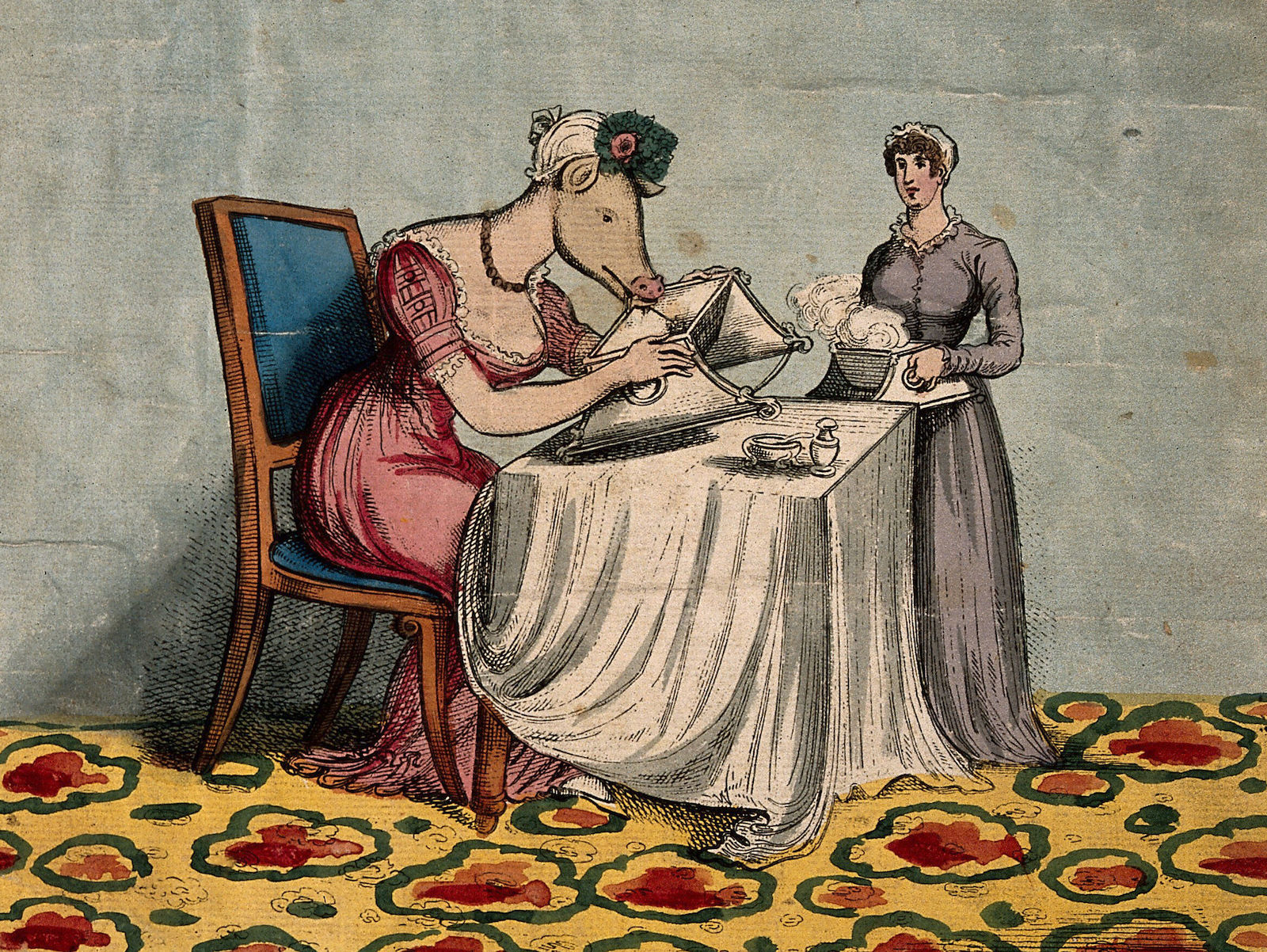London’s Pig-Faced Urban Legend | History Today - 5 minutes read
Her name was Tannakin Skinker. Or perhaps Miss Atkinson. Often, she had no name at all. But Londoners all agreed on one thing: somewhere in the city, a rich gentlewoman with the face of a sow was searching for a husband.
One of the earliest sources to describe the pig-faced lady, A Certaine Relation of the Hog-Faced Gentlewoman Called Mistris Tannakin Skinker (1639), reads like a fairytale. The lady’s pregnant mother refused to give alms to a poor beggar woman, who retaliated with a curse: ‘As the mother is hoggish, so swinish shall be the child she goeth withal.’ Shortly thereafter, the mother ‘was safely delivered of a daughter’ with ‘the nose of a hog, or swine’. The child’s desperate father consulted an astrologer, who asserted that, if the girl were to marry a gentleman, she might be restored to full human status. And so her parents ‘put her into very rich and costly habit (but her face still veiled and covered)’ and sent her to London to find a husband who would be willing to overlook her visage in exchange for a staggering £40,000 dowry. Unfortunately for the young woman, all of her suitors were interested only in her money, and so she remained unwed at the end of the story.
Though the pamphlet ends with an assertion of veracity (‘what is here discovered, is according to the best, and most approved intelligence’), it is unclear whether people would have believed in the pig-faced lady at this point. A number of the story’s details seem rather far-fetched: witchcraft and prognostication, the possibility of physical transformation, and an unreasonably massive dowry. Nevertheless, the pamphlet cites a series of ancient and medieval authors who wrote about similarly uncanny people and events: Herodotus, Albertus Magnus and Avicenna. Perhaps most convincingly, the author also mentioned several unusual humans who had recently been on show in London: a seven-year-old girl covered in hair (probably Barbara Urslerin, who had the congenital condition hypertrichosis lanuginosa) and a man with a parasitic twin growing from his side (perhaps Lazarus and Joannes Baptista Colloredo). Since Urslerin and the Colloredo brothers were real, the pamphlet asserted, why not also believe in a pig-faced woman?
The gentlewoman periodically resurfaced throughout the following century. In 1640 Robert Chamberlain attributed her appearance to her parents’ culinary proclivities: ‘Her father was a great eater of brawne [boar flesh], and her mother of swine’s cheek.’ The woman merited a passing mention in an anonymous satire on the First Anglo-Dutch War (1652-54), likely because A Certaine Relation of the Hog-Faced Gentlewoman had asserted that she had been born in Holland. And according to a ballad colourfully titled The Long-Nos’d Lass, she was back on London’s marriage market in the 1680s, though with no better luck than she had had decades before.
By the 1730s, the pig-faced lady’s status seems to have evolved from fairytale into true urban legend. The domestic servant James Paris du Plessis confidently asserted that she lived in Holborn, in central London; despite her ‘disagreeable’ and ‘grunting’ voice, he claimed that she ‘spoke very distinctly’ from behind the ‘velvet mask’ that hid her face from view. Though the woman seems to have disappeared for the rest of the 18th century, her reappearance in 1815 was the talk of the town.

Rumours began sometime before 9 February, when an advertisement was placed in the London Times by a young woman who presented herself as a candidate for lady’s maid to the ‘lady who is heavily afflicted in the face’. On 15 February, a gullible young man attempted to place an advertisement in the same paper, ‘offering himself to be [the pig-faced gentlewoman’s] husband’. The editors declined to print his advertisement, lamenting that ‘our rural friends hardly know what idiots London contains’. Two days later, a satirical letter to the editor by the pseudonymous Suiphilus (Pig-Lover) called the hog-faced woman ‘imaginary’ and mocked the would-be suitor (that ‘Swinish Lothario’) and his proposal. The Morning Chronicle got in on the action the same day, chiding that the rumours were nothing more than ‘idle tales’. But however much the papers’ editors might have bemoaned Londoners’ credulity, the story seems to have had a life of its own. ‘There is hardly a company in which this swinish female is not talked of’, grumbled The Times, ‘and thousands believe in her existence.’
By the beginning of March, a slew of wildly variant etchings were circulating around London. The woman was as likely to wear a hat or veil as to be pictured bare-headed, and she may have been either carefully coiffed or entirely bald. At her most passive, she might be seated at a writing desk or standing in a room while holding a muff. One print depicted her dancing, several placed her at a dining table, and two depicted her as musically inclined, either seated by or actively playing a piano. A silver trough, out of which she supposedly ate, appeared in numerous etchings. The artists seem to have recognised the woman as an urban legend, and the caricaturist George Cruikshank satirised wide swaths of London’s gullible inhabitants in his etching of the lady’s suitors.
London’s pig-faced furore of 1815 lasted for a few weeks and then subsided. Or perhaps the urban legend instead migrated to Dublin, where, up to the 1940s, Dr Steevens’ Hospital was rumoured to have been founded by the hog-headed sister of the doctor. In either case, the lady has since faded into obscurity and does not appear on modern lists of London’s urban legends.
Whitney Dirks is the author of Monstrosity, Bodies, and Knowledge in Early Modern England: Curiosity to See and Behold (Amsterdam University Press, 2024).
Source: History Today Feed